What is Kefir? And How to Make Kefir
I talk about kefir a lot, but I realized (due to a comment someone left not that long ago), that I have never done a tutorial on how I make kefir.
I learned from my friend, Sarah. So I can’t take the credit for this beverage that is often on my countertop.
Actually, everything that I know, I learned from someone.
I use Kefir grains as opposed to powder. When making kefir with a powdered culture, the potency of the kefir eventually deteriorates and you have to buy more culture. Whereas the kefir grains keep growing and producing, kind of like rabbits.
It is quite a simple process.
How to Make Milk Kefir
These directions are for making kefir using re-hydrated milk kefir grains.
I start out with a jar of kefir (purchase milk kefir grains at Cultures for Health) that has some grains in it. They have already turned the milk into kefir.
If you’ll notice, the lumpy part on top is the current location of my kefir grains.

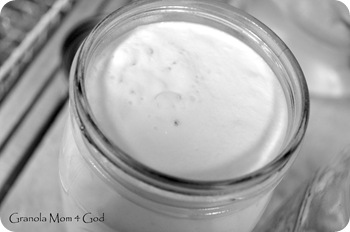
I know that my grains are ready to emerge from the kefir beverage and go swimming in a new jar of milk due to the smell and texture of the product in the jar.
A completed kefir smells a little bit like beer and is slightly bubbled on top. If I shake the jar, the kefir will wiggle like Jell-O, but no liquid emerges like from a hamburger cooked medium to medium-well.
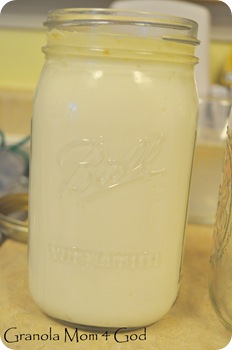
If you use raw or at least non-homogenized milk, you will notice a separation of milk and cream. The top will be slightly yellow and significantly thicker than the bottom of the kefir jar.
Note: you can make kefir with pasteurized and homogenized milk.
I can also see that my kefir is finished because of the little bubbles throughout the jar that you can barely see in the above picture.
Next, I scoop out my grains. Typically, I use a plastic spoon. I once heard that you aren’t supposed to use metal when dealing with grains.
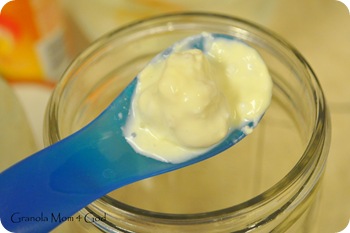
I don’t normally wash my grains off, but I thought you might like to see what you are really dealing with. Kind of looks like brains if you ask me. Except, these grow and populate!
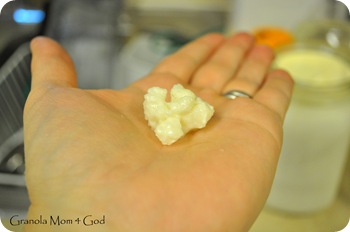
I drop the grains into a clean mason jar.
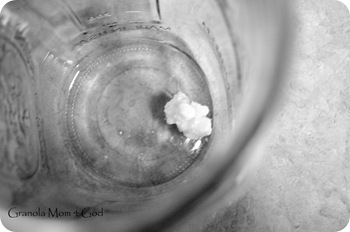
And fill it with milk.

I let it sit on the countertop covered loosely with a lid for 12-24 hours. It just depends on how warm my house is.
Once the milk has fermented . . . I start the process all over again.
We use kefir for smoothies, making salad dressings, or soaking our grains.
Ready to make your own milk kefir?

